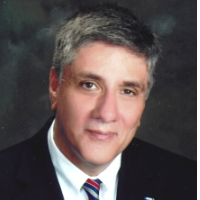Ambassador to Jamaica: Who Is Luis Moreno?

A career Foreign Service Officer who has spent the bulk of his career fighting the so-called “war on drugs” is set to be the next ambassador to the Caribbean island nation of Jamaica, home to more than 29,000 Rastafarians, who regard the smoking of marijuana a holy sacrament. Nominated September 10, Luis G. Moreno would succeed Pamela Bridgewater, who started her tour in Kingston in October 2010. Since June 2011, Moreno has been deputy chief of mission at the U.S. Embassy in Madrid, Spain.
Born circa 1955, Luis Moreno graduated from Staten Island Academy in 1973, going on to earn a BA in History at Fordham University in 1977 and an MA in Education at Kean College in 1981.
After joining the Foreign Service in 1983, Moreno served in the consular section and the Narcotics Assistance Unit at the embassy in Bogotá, Colombia, from spring 1984 to 1986, when he served as American citizens service chief at the embassy in Managua, Nicaragua. From 1987 to 1988, Moreno served as a staff assistant in the Latin American Affairs Bureau of the State Department.
Moreno spent the next five years as a drug warrior. From 1988 to 1990, Moreno served as deputy director of the Narcotics Affairs Section at the embassy in Lima, Peru, where he managed a coca eradication project. From 1990 to 1993, Moreno served as the Colombia desk officer for the Bureau of International Narcotics and Law Enforcement in Washington.
From 1993 to 1995, Moreno took a break from counter-narcotics to serve as refugee coordinator at the embassy in Port-au-Prince, Haiti, while thousands of “boat people” returned to the island, and as political-military officer after the United Nations intervention in 1994.
Intending to get back to drugs, in 1995 Moreno took an assignment at the embassy in Panama as narcotics director and law enforcement coordinator, but was detailed to serve as Kurdish refugee coordinator instead, supervising government efforts to resettle Kurdish refugees in the U.S.
From 1997 to 2001, Moreno served as narcotics affairs director at the embassy in Bogotá, Colombia, where he was one of the primary planners of “Plan Colombia,” an anti-drug effort that spent several billion dollars of U.S. aid to stop the flow of cocaine.
Back in Haiti, Moreno served as deputy chief of mission at the embassy, where he was the primary point of contact with the Multinational Peacekeeping Force, from August 2001 to August 2004. On February 29, 2004, it was Moreno who accompanied Haitian President Jean-Bertrand Aristide to the airport when he was forced out of office in a military coup.
Moreno served his first tour in Mexico, as consul general and principal officer at the consulate in Monterrey, from August 2004 to June 2007, and his first tour in the Middle East, as deputy chief of mission at the embassy in Tel Aviv, Israel, from August 2007 to May 2010. From May 2010 to June 2011, he served at the embassy in Baghdad, Iraq, as political-military affairs minister counselor and as force strategic engagement cell director.
Moreno speaks Spanish, French and some Haitian Creole.
-Matt Bewig
- Top Stories
- Unusual News
- Where is the Money Going?
- Controversies
- U.S. and the World
- Appointments and Resignations
- Latest News
- Trump to Stop Deportations If…
- Trump Denounces World Series
- What If China Invaded the United States?
- Donald Trump Has a Mental Health Problem and It Has a Name
- Trump Goes on Renaming Frenzy






Comments